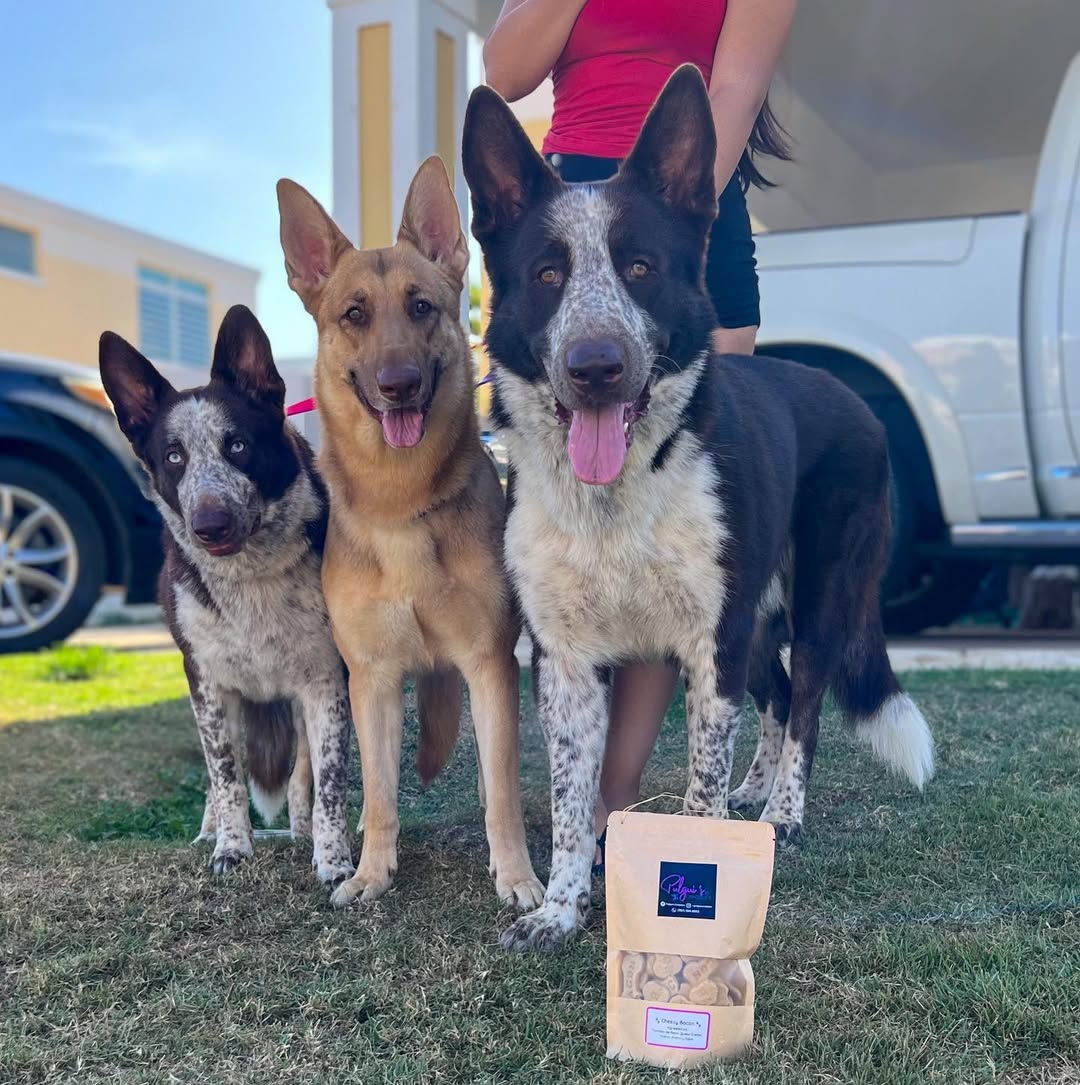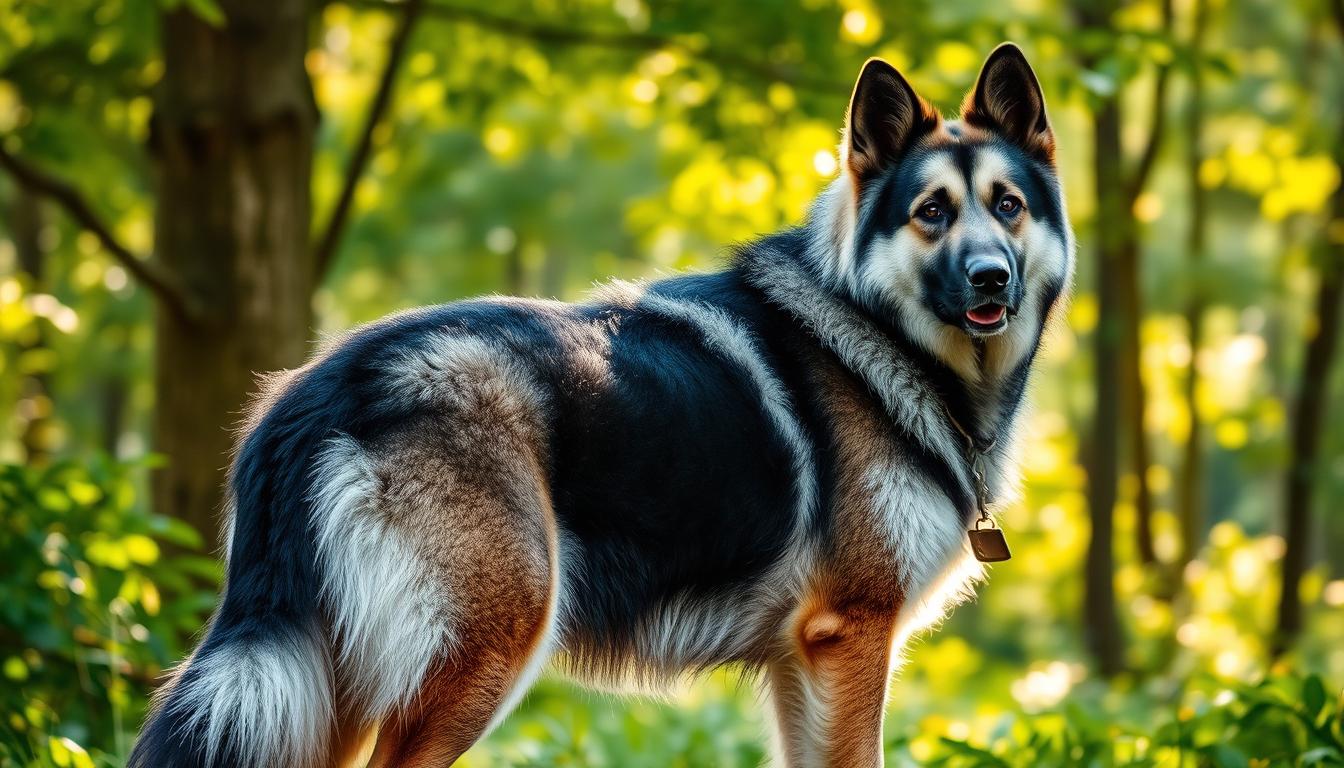Did you know that only one breeding dam in history produced the striking coat pattern seen in every Panda Shepherd today? This accidental genetic marvel has captivated dog lovers since its discovery in 1993, creating a lineage as rare as it is beautiful.
The Panda German Shepherd isn’t a separate breed—it’s a purebred with a unique piebald pattern caused by a spontaneous KIT gene mutation. Unlike standard black-and-tan shepherd dogs, these pups display 35% white fur mixed with dark patches. Their appearance sparks debates: is this just a flashy coat, or does it signal something deeper?
Rest assured, these dogs share the same loyal temperament and working instincts as traditional German Shepherds. We’ll explore how their genetics affect more than just looks, including health considerations every potential owner should know.
Key Takeaways
- The Panda Shepherd’s coat results from a rare genetic mutation, not crossbreeding
- White markings cover about 35% of the body in distinct patterns
- Purebred status is maintained through strict lineage documentation
- Temperament matches standard GSD intelligence and protectiveness
- Ethical breeding practices are crucial due to genetic complexities
Whether you’re drawn to their unusual beauty or curious about their origins, this guide breaks down everything from coat science to finding responsible breeders. Let’s help you make informed decisions for your family’s next four-legged companion.
Genetics and Physical Traits of Panda German Shepherds
The secret to their distinctive look isn’t paint—it’s a genetic twist. A single spontaneous KIT gene mutation creates the signature coat that sets these dogs apart. Unlike standard coloring, this autosomal dominant trait only needs one copy of the altered gene to show visible effects.
The Science Behind the Spots
This rare mutation causes symmetrical white patches on the muzzle, chest, and tail tip. Breeders use DNA tests—like cheek swabs, to confirm carriers. Two copies of the gene? Sadly, those embryos don’t survive, making careful breeding essential.
Coat Composition Explained
You’ll notice about 35% white fur mixed with classic black-and-tan base colors. The pattern varies, but most have a striking forelock blaze and belly markings. These spotting features appear at birth and remain consistent as pups grow.
Roots of the Rarity
First observed in 1993, this trait traces back to one female’s bloodline. Today’s breeders combine genetic testing with traditional methods to maintain healthy litters. Modern science helps preserve this living example of nature’s artistry.
Temperament, Health, and Lifestyle Considerations
Imagine a companion who thrives on solving puzzles while guarding your home with military precision. These spotted shepherds bring the same legendary work ethic as standard counterparts, but their unique needs demand thoughtful planning. Early training isn’t optional—it’s your blueprint for a harmonious household.

Behavioral Traits and Family Dynamics
Their intelligence shines through problem-solving skills and lightning-fast command responses. One breeder notes: “You’re not just getting a pet—you’re gaining a four-legged CEO who needs meaningful jobs.” Without proper socialization, their protective instincts can tip into overdrive.
Families with children should prioritize these steps:
- Introduce new people/animals during puppyhood
- Establish clear boundaries through positive reinforcement
- Provide chew toys to redirect natural herding behaviors
Common Health Concerns and Exercise Needs
While their coat patterns don’t cause health issues, the breed’s athletic build requires vigilance. Hip screenings at 24 months help catch dysplasia early. Many owners overlook how stress from boredom manifests as chronic licking or tail chasing.
Your exercise routine should include:
- 45-60 minute daily walks with obedience drills
- Weekly swimming sessions to protect joints
- Interactive feeders that challenge their sharp minds
Remember—a tired shepherd is a happy shepherd. Pair physical activity with mental stimulation to prevent destructive habits and promote lifelong health.
Panda German Shepherd: Breeding, DNA Testing, and Ethical Considerations
What separates exceptional breeders from opportunists? The answer lies in rigorous DNA analysis and ethical practices. Reputable specialists use sterile swabs to collect cheek cells, not saliva, ensuring accurate mutation detection. Contaminated samples could misidentify carriers, leading to disastrous breeding choices.

Decoding Genetic Test Results
Three possible outcomes determine breeding pairs: N/N (normal), N/P (carrier), and P/P (nonviable). Responsible programs never mate two carriers—the 25% chance of P/P embryos means tragic losses. One veterinary geneticist warns: “Breeding for rare traits without testing is Russian roulette with puppies’ lives.”
Ethical Priorities in Canine Care
Transparent breeders share full health clearances beyond coat genetics—hip scores, cardiac exams, and lineage records. They limit litters per dam and maintain diverse bloodlines. Ask for:
- Certified OFA/PennHIP joint evaluations
- Documented ancestry going back four generations
- Written health guarantees against hereditary conditions
Lifespan Protection Through Science
Proper gene management prevents the shortened lifespans seen in poorly bred dogs. While these spotted companions typically live 10-14 years, irresponsible practices can introduce immune issues or organ defects. Genetic testing acts as both shield and compass—guiding breeders toward healthier futures while preserving the breed’s working legacy.
Conclusion
Choosing a Panda German Shepherd isn’t just about coat color—it’s a commitment to understanding their unique needs. Their striking pattern stems from a rare gene mutation, making each dog a living example of nature’s artistry. Yet beneath those eye-catching markings beats the heart of a true working breed.
These dogs share the intelligence and loyalty that made German Shepherds beloved worldwide. Regular exercise and mental challenges keep them thriving, while health screenings help prevent common breed issues. Families should prepare for an active companion who thrives on structure and purpose.
Ethical breeding practices remain critical. Always verify DNA test results and lineage documentation to ensure healthy puppies. Responsible ownership means balancing admiration for their unique appearance with dedication to their physical and emotional needs.
Ready to welcome one into your home? Start by contacting breeders who prioritize transparency and genetic diversity. Ask about health clearances, parent temperaments, and socialization methods. Your informed choices today shape your dog’s quality of life tomorrow—honoring both their rare beauty and timeless working spirit.
